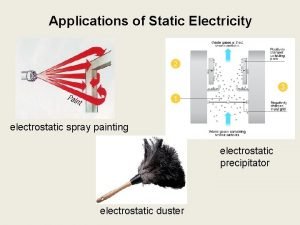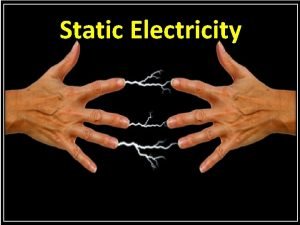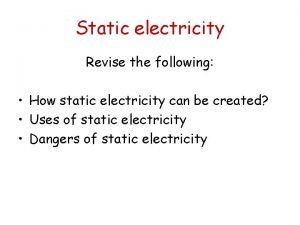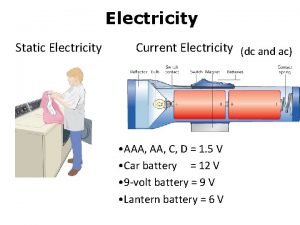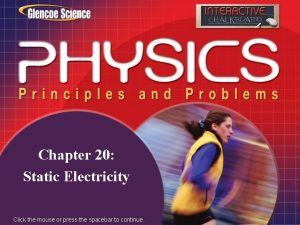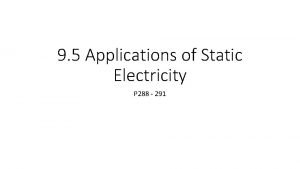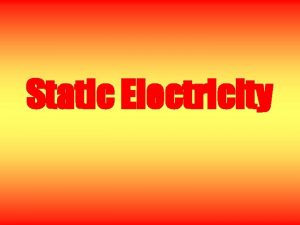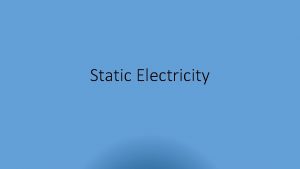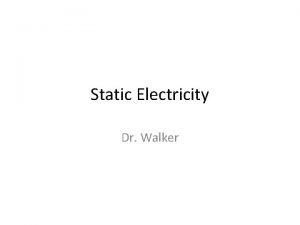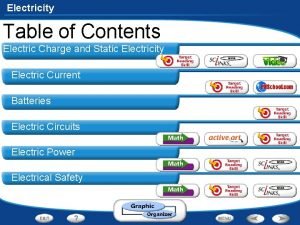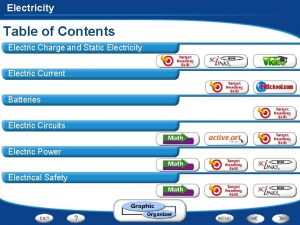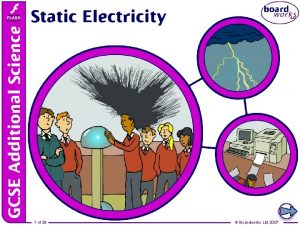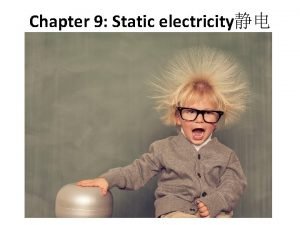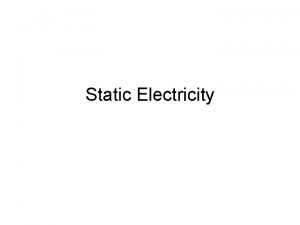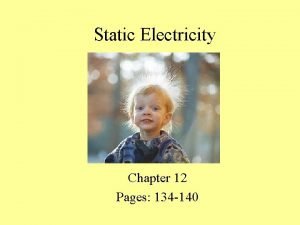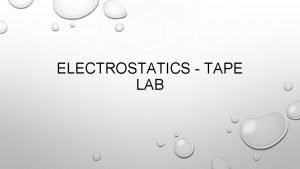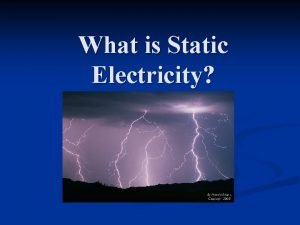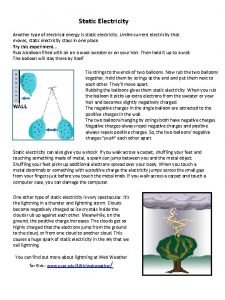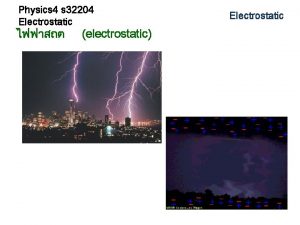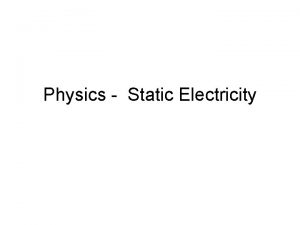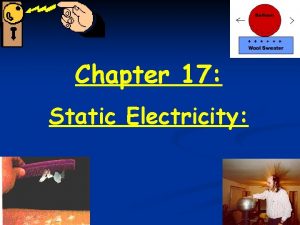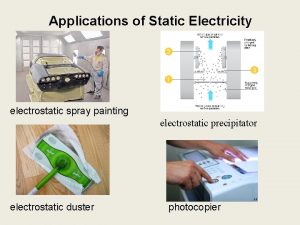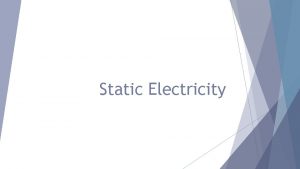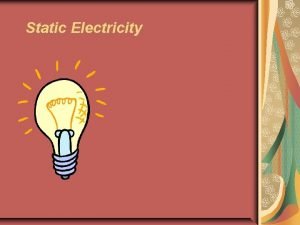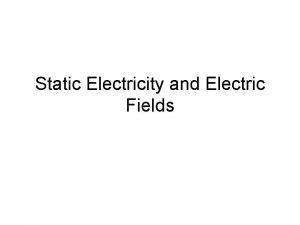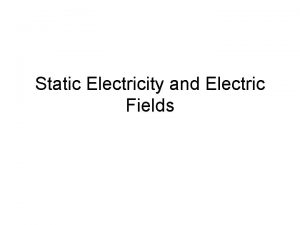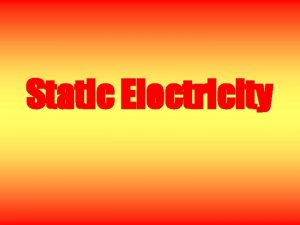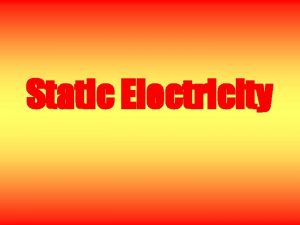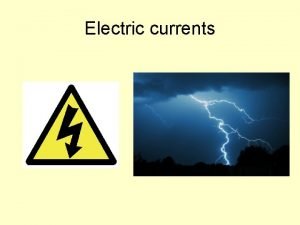Pre AP Physics STATIC ELECTRICITY Electrostatic the study
























- Slides: 24

Pre AP Physics

STATIC ELECTRICITY • Electrostatic – the study of electrical charges that can be collected and held in one area. • They flow in no particular direction (trapped in a body)

Electricity of the Atom They are ordinarily neutral in charge # of protons = # of electrons Neutrons = no charge Protons = + 1 charge Electrons = -1 charge

The actual charge of an electron -19 10 -1. 60217657 X coulombs

Little History: Ben Franklin Proved lightning was static electricity Invented lightning rod Built a static electricity generator Coined the terms positive and negative for electrical charge

Charged objects Atoms become charged by gaining or losing electrons An object that exhibits electrical interaction after rubbing is said to be charged

Rules of Attraction Opposite will attract Only the electrons will move Like will repel Protons will move but they don’t leave the nucleus.

Interaction between a charged object and a neutral object: Any charged object (positive or negative) will have an attraction interaction with a neutral object.

Why are protons never lost or gained? Protons are held in the nucleus by the strongest forces in the universe.

Neutral State Charged objects will eventually return to their NEUTRAL state What/How does this happen? The charge “leaks off” onto the water molecules in the air. On humid/rain days it would be difficult to hold a charge for long.

Grounded - neutral Charged objects lose their charge when grounded.

When grounded: Negatively charged objects . . Lose electrons and become neutral Positively charged objects . . . Gain electrons and become neutral

Electroscope Used to test the presence of a charged object.

Where do charges come from? Rubbing materials does NOT create electric charges. It just transfers electrons from one material to the other.

Transfer of charge Charge can be transferred between neutral objects by FRICTION. Ex: Rubber rod rubbed with fur or wool will cause electrons to transfer to the rod Rubber Rod gains electrons and becomes negative Fur/wool loses electrons and becomes positive

Conduction Charging by contact – direct touching EX: Conduction with a negative rod

How do the electrons flow during conduction? When a negative charged rod comes in contact with the knob the electrons flow into the electroscope – charge negative When a postive charged rod comes in contact with the knob the electrons flow into the rod – charge positive

Charging by Induction

Charging by Induction

Induction: The production of a charge in an uncharged body by bringing a charged object close to it When negatively charged rod is put near a metal can. . . - - - induced charges attraction ++ + - metal can - - repulsion electrons of the can are pushed away from the rod. top of the can: positive buttom of the can: negative attraction > repulsion

Attraction of uncharged objects Similarly, when charged rod is close to paper scrap. . - - - - attraction between the rod attraction and + charge > repulsion between the rod and - charge. –––– ++ + + paper molecules of paper align. repulsion

Static Discharge Human body can not feel less than 2, 000 volts of static discharge Static charge built up by scuffing shoes on a carpet can exceed 20, 000 volts!

Lightning

What causes lightning? You need cold air and warm air. It is a discharge of the static electricity that builds up in cloud in certain weather conditions. Usually when the ground is warm and the air is humid.
 Static electricity and current electricity
Static electricity and current electricity Static electricity and current electricity
Static electricity and current electricity Electricity and magnetism vocabulary
Electricity and magnetism vocabulary Static electricity painting
Static electricity painting Static electricity diagram
Static electricity diagram How does a photocopier work using static electricity
How does a photocopier work using static electricity Bill nye current electricity
Bill nye current electricity Who invented electricity
Who invented electricity Ohm's law unit
Ohm's law unit Difference between static and current electricity
Difference between static and current electricity Static electricity chapter 20 answers
Static electricity chapter 20 answers Static electricity painting
Static electricity painting Stationary electric charge
Stationary electric charge Static electricity examples
Static electricity examples Static electricity
Static electricity Static electricity table
Static electricity table Graphic organizer 1 electric current
Graphic organizer 1 electric current Static electricity summary
Static electricity summary Static electricity
Static electricity Static electricity
Static electricity Static electricity
Static electricity Static electricity
Static electricity Static electricity tape lab
Static electricity tape lab Static electricity
Static electricity Static electricity one cloud to another
Static electricity one cloud to another



